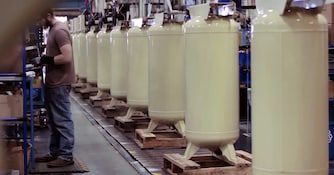
Commercial Air Compressor Buyer's Guide
The industrial revolution ushered in the ability to harness massive power and build titans of industry. Today, industries are still built with engines more powerful than ever, and one of the machines that have stood the test of time are commercial air compressors.
These behemoths will deliver compressed air power to large autobody shops, factories, and entire manufacturing plants. So, when it comes to a buying decision that can dramatically affect the profitability of your business, you need a unit that exceeds your requirements, works efficiently to save you valuable dollars, and one that's built to last until the next industrial revolution.
This article will guide you through all the important information you need to consider to make sure you choose the right type of commercial compressor and also includes all the important steps to take in order to size it properly for any job.
How to Pick the Perfect Industrial Compressor
Professional air compressors pack a punch regardless of the type, but there are 3 distinct styles you'll need to choose from before making any other decisions or get to sizing it properly. If you want to learn more about how each type of compressor is powered, we recommend first reading our Air Compressors 101 Guide to learn how each type works in detail.
Commercial-Grade Reciprocating Compressors
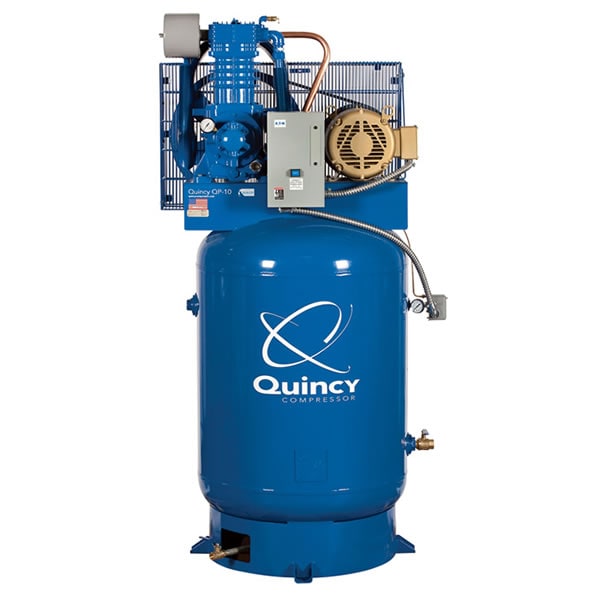 This is the most common type of compressor seen in small to medium-sized businesses, and it is powered by a reciprocating piston that pushes air into the compression chamber.
This is the most common type of compressor seen in small to medium-sized businesses, and it is powered by a reciprocating piston that pushes air into the compression chamber.
The important thing to understand here is that these air compressors are notoriously louder than the others because their internal parts rub together while working and create friction and heat. Think of a supercharged car engine when the pedal is stomped on-we know it's fun, but it's also loud and not very efficient.
Single-piston or single-stage models tend to be noisier than dual-piston (also called two-stage) reciprocating air compressors because two pistons need to work half as hard since each piston can operate at half the revolutions per minute (RPM) and deliver the same amount of power as a single-piston or single-stage compressor. However, technology is increasingly changing and newer, much quieter reciprocating air compressors are seen on the market today.
Rotary Screw Air Compressors
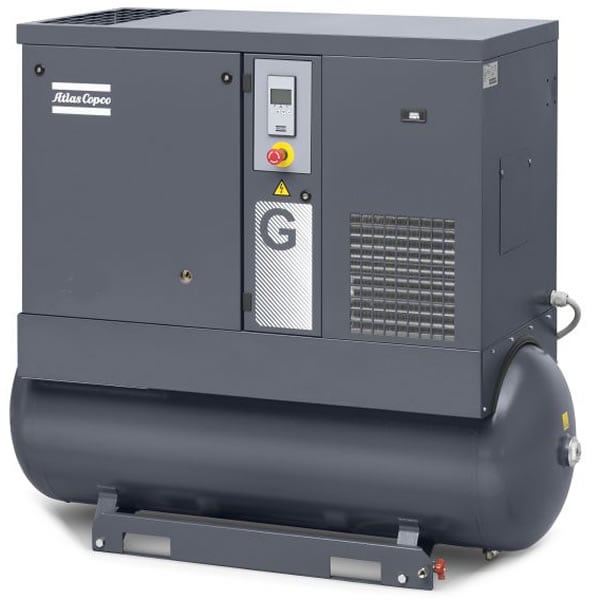 Rotary screw compressors are very powerful and are quieter than piston compressors. They are designed to run all day long without breaking a sweat. If you have greater than a 60% duty-cycle need, then choose a rotary compressor. In applications where your air demands are constant and heavy, these compressors will make your life easy and save you money in the long run.
Rotary screw compressors are very powerful and are quieter than piston compressors. They are designed to run all day long without breaking a sweat. If you have greater than a 60% duty-cycle need, then choose a rotary compressor. In applications where your air demands are constant and heavy, these compressors will make your life easy and save you money in the long run.
They also feature variable-speed drives that run at exactly the level you need them to-no more and no less, maximizing your power, efficiency, and energy savings. They often provide compressed air for precision tasks such as powder-coating or sand-blasting.
Oil-Free Scroll Air Compressors
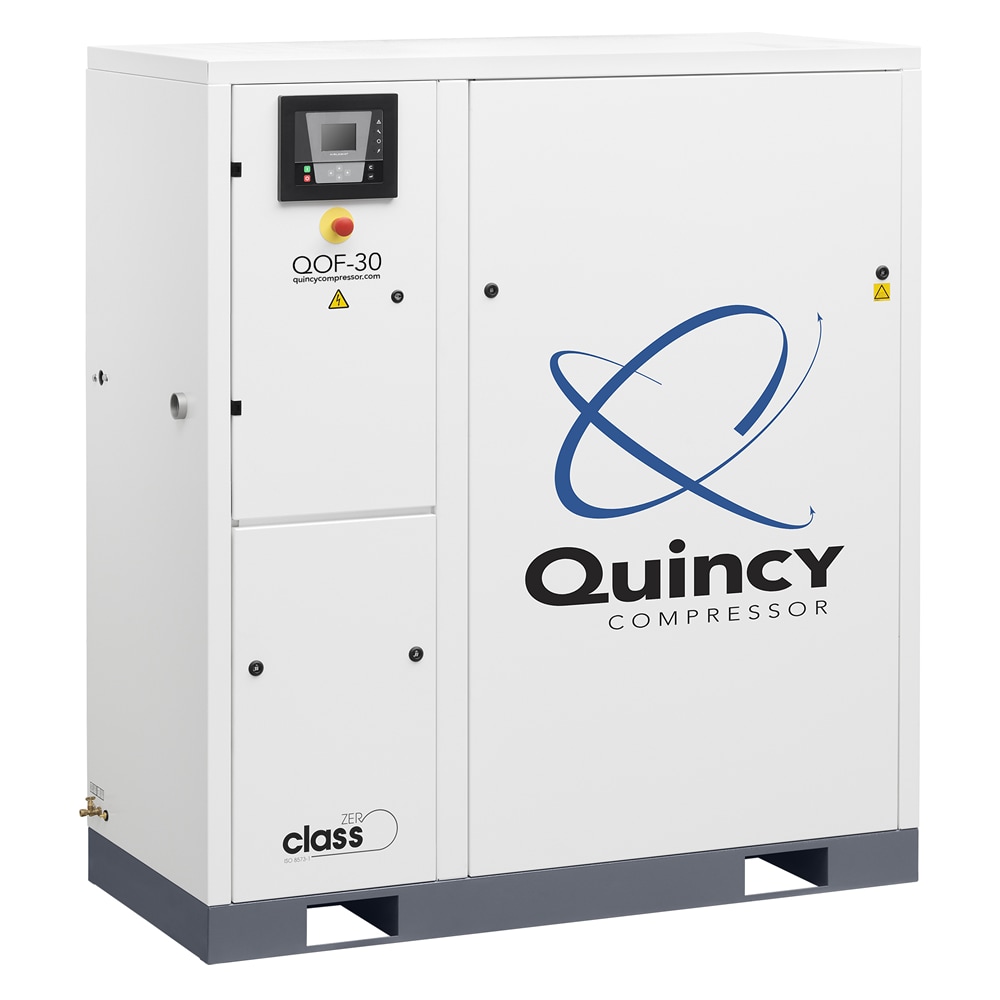 Scroll compressors are oilless, quiet, and efficient. They are an ideal choice for lab facilities or when manufacturing pharmaceutical products, or anything else that demands clean, dry, oil-free compressed air.
Scroll compressors are oilless, quiet, and efficient. They are an ideal choice for lab facilities or when manufacturing pharmaceutical products, or anything else that demands clean, dry, oil-free compressed air.
Because these compressors are oil-free, they hardly require any maintenance at all, and because the internal components don't touch, they operate extremely quietly. They are also extremely efficient when used for the proper job. Companies in industries that rely on clean, oil-free air use scroll compressors and love them for their quiet operation and energy efficiency.
How to Size a Commercial Air Compressor
Choosing the right type of air compressor is the easy part. The challenging part is making sure it's sized correctly and that you take into account the future growth of your business. It's better to measure twice and buy once, especially since these compressors are large investments. The next steps outlined below will allow you to properly size the compressor based on your air demand, energy guidelines, and HP/CFM/PSI requirements.
Air Demand Requirements
These ratings are the first and most important decision to make when properly sizing a compressed air system. All you need to understand about Horsepower (HP) is that more means more potential for satisfying higher air demands, so higher HP ratings generally equals a higher CFM rating on the compressor.
Cubic Feet per Minute (CFM) is the measurement of exactly how much air your compressor can produce and move through the system every minute. A higher CFM rating equals more compressed air at the desired Pounds per Square Inch (PSI) rating. Both CFM and PSI ratings coincide with air tools and other equipment to give you an idea of how much "air demand" it will cost you to run each piece of equipment. If you're running many tools or powering large systems, you'll need higher CFM and PSI ratings because you are using more resources (air volume) to accomplish the job.
If you expect to have a low duty-cycle but have high air demands, consider getting a two-stage compressor as opposed to a rotary unit. Because rotary compressors are meant to run constantly, if they aren't running for a period of time, it could become more of a problem rather than a solution. It's important to consider this when deciding on which style of compressor works best for your application and air demands.
Single-Stage Vs Two-Stage Compressors
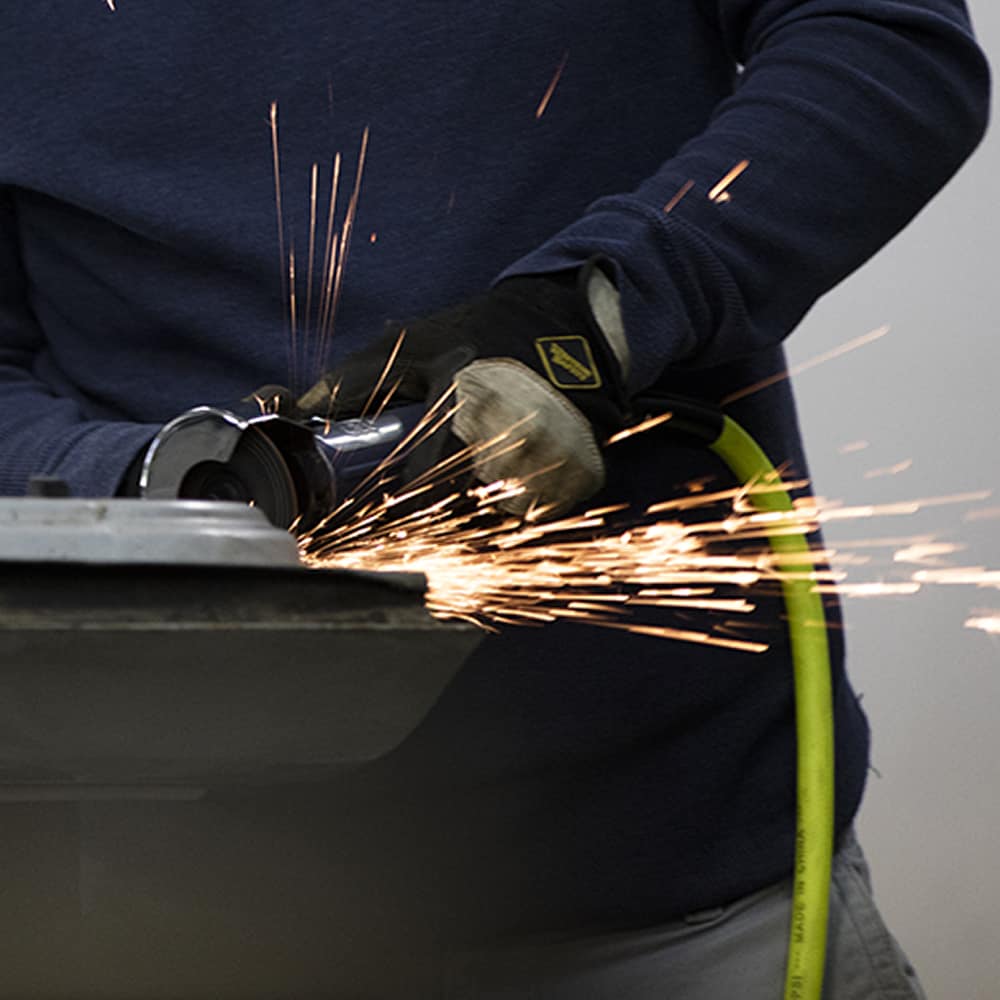
When it comes to commercial compressors, single-stage compressors are mostly reserved for hobbyists or homeowners who like to do automotive work on the side, do some airbrushing, or perhaps run a small shop that requires a larger stationary air compressor tank.
However, any commercial facility or manufacturing application is going to require a two-stage compressor just to keep up with air demands.
Two-stage air compressors compress the same air twice, giving you almost twice the PSI and much more power for doing work as opposed to a single-stage unit.
Single-Phase Vs Three-Phase Voltages
Voltage is very important when sizing any air compressor because your compressor won't work unless the compressor's voltage type matches the voltage type of the power source. Single-phase power can be thought of as the standard power supply and outlets you're familiar with in all homes, apartment buildings, and most businesses.
Keep in mind that there are a few limitations with single-phase power and compressors, and some manufacturers only go as high as 7.5 HP in single-phase power. The exception is that some companies like Emax or Industrial Air will go up to 10 HP in single-phase power, but the selection is limited, and after that, the only option is three-phase power as described below.
Commercial facilities and industrial buildings are sometimes wired with three-phase power,
which is more efficient and produces smoother electrical power, but at the cost of being much more expensive to install than traditional single-phase power. If your building was wired with three-phase power, the compressor you choose must also be built for three-phase power hookups. We always recommend consulting an electrician and checking local codes before purchasing.
Other Important Sizing Tips for Industrial Compressors
- Tank size (in gallons):
an important factor when choosing any compressor because a larger tank will be useful for longer, but will also take longer to fill. - Tank orientation:
important to consider as well since some styles are horizontal while others are vertical and better suited in areas with less space. - Loudness:
rotary screw compressors are quieter than reciprocating compressors, but both have come a long way with new technology designed to keep the noise down while in operation.
Tools & Accessories for Industrial Compressors
The accessories for an industrial compressed air system can be added on to as needed, however, there are many air compressor accessories to consider. Most of the other components in your system will come down to additional air tanks for storage, air dryers, air regulators, and air filters to keep everything in your system running cleanly.
In addition to this, you'll need to get the compressed air to wherever you need it, and that's where air delivery systems come in. If your air lines are made of steel or black piping, there are new options on the market that give you the power to immediately and endlessly customize the direction and flow of your lines without worrying that they'll rust out. This new technology is lighter and just as durable as the traditional black piping-and much easier to work with overall.
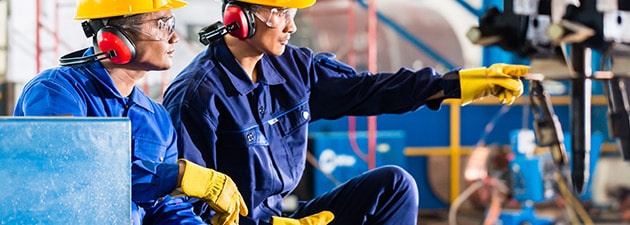
Air Treatment for Commercial Compressors
Air treatment is extremely important for all air compressors, however, it is especially vital for industrial compressors that are hard at work all day, every day. Using untreated air is the fastest way to destroy a compressed air system, and cost you thousands to replace.
Whether you're using your compressor for applying a smooth coat of paint to an automobile or using it for powering air tools, air treatment is an important part of doing the job right. Removing water and contaminants from your compressed air can prolong the life of your air tools and keep your paints clean and dry so they apply more smoothly.
They say an ounce of prevention is worth a pound of cure, and with air treatment, this is true. The link below is a great resource for learning about each part of an air treatment system and how they all work together.
Reducing Costs and Increasing Efficiency
Who wouldn't want to maximize what they save with their system? When energy costs are as high as they are, even saving a few cents per kilowatt-hour can add up to thousands by the end of the year. Learning how to reduce energy costs will increase your production output and save you money, regardless of your current or future setup.
Use our industrial compressor audit guide for a step-by-step walkthrough of everything you should consider when optimizing costs and energy use. We also highly recommend reading all of the resources in the Commercial Efficiency Navigation below.
Commercial Efficiency Navigation:
Main Guide | Commercial Buyer's Guide| Reduce Energy Costs | How to Audit Your System | VSD Technology | Air Treatment Systems




